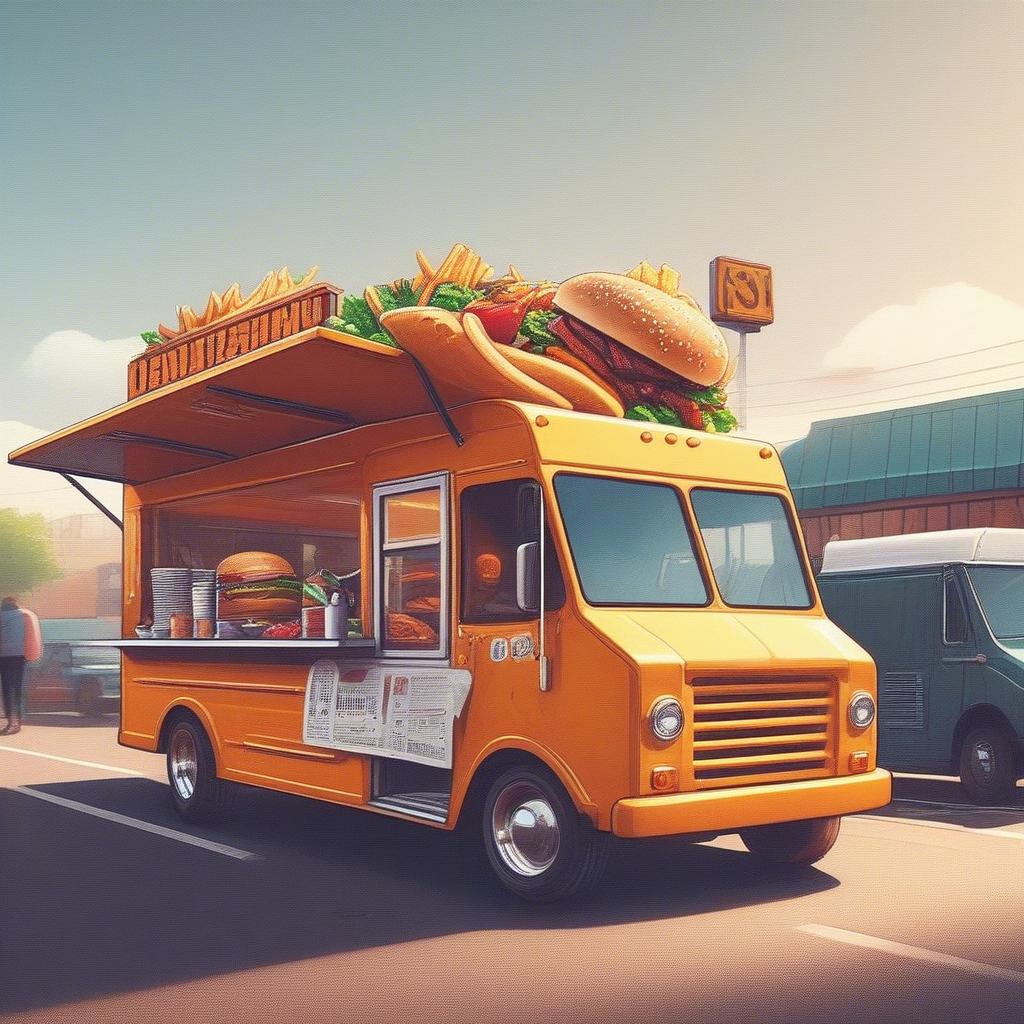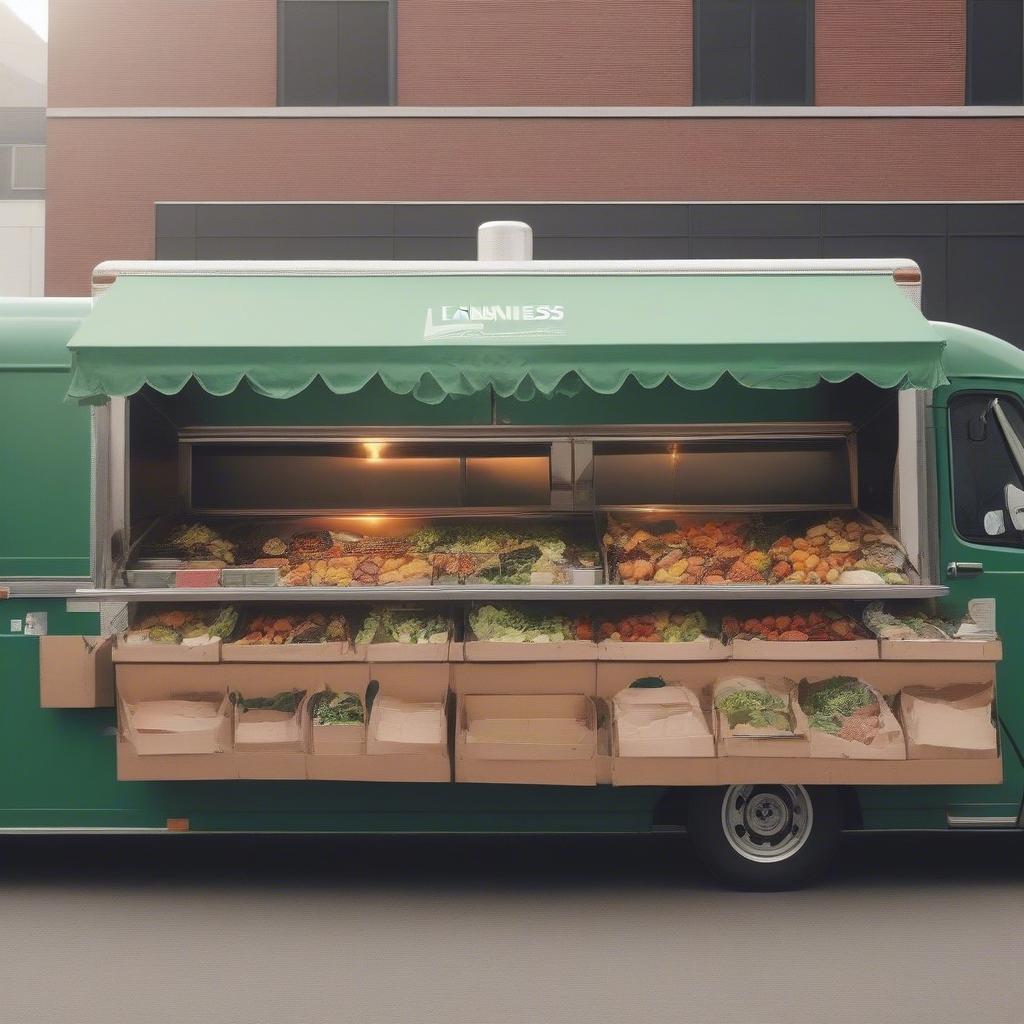
Running a food truck is an exciting venture, a delicious dream on wheels. But behind the sizzle of the grill and the friendly smiles lies a complex web of daily operations that need to run like a well-oiled machine. Without streamlined processes, even the best menu and prime location can’t save you from chaos and missed opportunities. This guide will delve deep into the essential aspects of food truck management, offering practical, actionable efficiency tips to keep your business thriving.
Understanding the Importance of Streamlined Operations
Before we dive into specifics, let’s understand why optimizing your daily operations is crucial for your food truck. It’s not just about working harder, it’s about working smarter.
Why Streamline?
- Increased Profitability: Efficient operations reduce waste, minimize errors, and maximize your output, directly impacting your bottom line.
- Reduced Stress: Clear processes and well-defined roles eliminate confusion and last-minute scrambles, creating a calmer and more enjoyable work environment.
- Enhanced Consistency: Customers expect a consistent experience. Streamlined processes ensure your food quality and service remain consistently high.
- Scalability: If you dream of expanding your food truck business, efficient operations are the foundation you need to handle growth without falling apart.
- Improved Employee Morale: When staff knows their responsibilities and workflows, they feel more confident and empowered, boosting morale and productivity.
The Consequences of Poor Operations
- Waste and Spoilage: Lack of inventory management can lead to wasted food and ingredients.
- Longer Wait Times: Inefficient processes at the ordering window and food preparation lead to impatient customers and lost sales.
- Missed Orders: Disorganized procedures increase the risk of errors, leading to customer dissatisfaction.
- Burnout: Constant chaos and overwork can exhaust your team, impacting their performance and ultimately hurting your business.
- Reputational Damage: Inconsistent quality, long waits, and errors can negatively impact your reputation, making it harder to attract and retain customers.
Core Areas of Daily Operations for a Food Truck
To effectively streamline, we need to dissect the key areas of daily operations that impact your food truck. These include:
1. Menu Management
Optimizing Your Menu
- Keep it Focused: A smaller menu, showcasing your specialties, simplifies ordering and preparation, improving efficiency.
- Seasonal Items: Feature seasonal ingredients to keep your menu fresh, reduce costs, and align with customer preferences.
- Top Sellers: Identify your most popular and profitable dishes and give them prominent positions on your menu.
- Menu Design: A clear, well-organized menu makes ordering easy and encourages customers to explore your offerings.
- Digital Menus: Use digital menus on screens or tablets for easy updates and flexibility.
Inventory Management
- Regular Inventory Counts: Take a physical inventory of all food and supplies at least weekly, or more frequently based on usage.
- Par Levels: Establish par levels (the minimum quantity you need on hand) for each ingredient to avoid shortages.
- FIFO (First In, First Out): Implement FIFO to ensure older ingredients are used before newer ones, minimizing waste.
- Supplier Relationships: Develop relationships with reliable suppliers to ensure consistent quality and timely delivery.
- Digital Inventory Tracking: Use spreadsheet software or specialized apps to track inventory efficiently.
2. Prep and Production
Streamlining Food Prep
- Batch Prep: Prepare ingredients in large batches during downtime to minimize preparation during peak hours.
- Standardized Recipes: Use standardized recipes to ensure consistent quality and simplify training.
- Organized Workspace: Keep your cooking area clean and organized, with tools and ingredients within easy reach.
- Efficient Layout: Design your cooking space to minimize movement and maximize workflow.
- Prep Lists: Create detailed prep lists for each day to ensure nothing is missed.
Efficient Cooking Techniques
- Multi-Tasking: Train your staff to effectively multi-task while cooking.
- Proper Equipment: Invest in high-quality, efficient cooking equipment to speed up production.
- Consistent Timing: Use timers and standardized cooking times to ensure dishes are cooked properly.
- Clear Communication: Develop clear communication systems between staff during peak periods.
- Food Safety: Prioritize food safety and follow strict protocols during preparation and cooking.
3. Order Taking and Fulfillment
Optimizing the Order Process
- Clear Ordering Window: Ensure your ordering window is clearly visible and well-lit.
- Digital Ordering Systems: Use tablets or mobile devices to take orders, improve speed, and reduce errors.
- Order Accuracy: Establish procedures to confirm orders with customers to avoid mistakes.
- Payment Options: Offer multiple payment options (cash, credit/debit, mobile payments) to cater to all customers.
- Friendly Staff: Train your staff to be friendly, efficient, and attentive to customer needs.
Efficient Order Fulfillment
- Order Number System: Use an order number system to keep track of orders and reduce confusion.
- Designated Pick-Up Area: Have a designated area for customers to pick up their orders.
- Packaging Efficiency: Use easy-to-handle packaging to expedite order completion.
- Clear Call System: Have a clear system to call out order numbers or names for pick-up.
- Time Tracking: Track the time it takes to complete each order to identify bottlenecks.
4. Scheduling and Staff Management
Effective Staff Scheduling
- Forecast Demand: Use past data to accurately forecast demand and schedule staff accordingly.
- Cross-Training: Cross-train staff to handle multiple tasks, allowing for flexibility and efficient coverage.
- Flexible Scheduling: Offer flexible scheduling options to accommodate employee needs and reduce turnover.
- Clear Expectations: Communicate clear expectations for each shift to ensure everyone is on the same page.
- Time-Off Requests: Establish a clear process for handling time-off requests.
Staff Training and Performance
- Comprehensive Training: Provide comprehensive training on all aspects of your operations, from food preparation to customer service.
- Regular Feedback: Give staff regular feedback on their performance and identify areas for improvement.
- Performance Metrics: Implement key performance indicators (KPIs) to track individual and team performance.
- Incentive Programs: Consider implementing incentive programs to motivate staff and boost productivity.
- Team Building: Organize team-building activities to promote a positive work environment and improve communication.
5. Customer Service and Feedback
Providing Exceptional Service
- Friendly and Attentive: Train staff to be friendly, approachable, and attentive to customer needs.
- Problem Resolution: Empower staff to handle customer complaints effectively and quickly.
- Personalization: Where possible, personalize the customer experience (e.g., remembering regular orders).
- Go the Extra Mile: Offer small extras (e.g., a free condiment) to surprise and delight customers.
- Proactive Communication: Keep customers informed about wait times or any changes to the menu.
Gathering and Acting on Feedback
- Feedback Forms: Provide physical or digital feedback forms for customers to share their experiences.
- Online Reviews: Monitor online reviews (Google, Yelp) and respond to customer feedback.
- Social Media Engagement: Engage with customers on social media and solicit their feedback.
- Action Plan: Create an action plan to address common customer complaints and improve service.
- Continuous Improvement: Use feedback to continuously improve your operations and enhance customer satisfaction.
6. Financial Management
Tracking Income and Expenses
- Daily Sales Tracking: Track daily sales using a POS system or a spreadsheet.
- Expense Tracking: Keep detailed records of all expenses, including food costs, labor, and supplies.
- Categorize Expenses: Categorize expenses to better understand where your money is going.
- Regular Reconciliation: Reconcile your cash and credit card transactions regularly.
- Financial Software: Use accounting software to streamline financial management.
Budgeting and Financial Planning
- Budget Creation: Create a detailed budget based on your projected sales and expenses.
- Monitor Performance: Track your performance against your budget and make adjustments as needed.
- Analyze Financial Statements: Regularly analyze your financial statements to identify areas for improvement.
- Pricing Strategies: Develop a pricing strategy that ensures profitability while remaining competitive.
- Long-Term Planning: Develop a long-term financial plan to support your growth and sustainability.
7. Maintenance and Safety
Food Truck Maintenance
- Regular Cleaning: Clean your food truck thoroughly each day to ensure a hygienic environment.
- Preventative Maintenance: Follow a regular preventative maintenance schedule to keep your equipment in good working order.
- Professional Repairs: Hire professionals for major repairs and maintenance.
- Emergency Supplies: Keep a supply of essential repair tools and emergency equipment on hand.
- Inspection Schedule: Develop a schedule for inspecting all components of your truck to catch problems early.
Safety Procedures
- Food Safety Training: Provide regular food safety training to all staff.
- Proper Storage: Ensure food is stored at proper temperatures to prevent spoilage and contamination.
- Emergency Protocols: Establish clear emergency protocols for situations like fires, accidents, or equipment malfunctions.
- First Aid: Keep a first-aid kit readily accessible and train staff on basic first aid.
- Compliance: Ensure you comply with all local health and safety regulations.
Practical Strategies and Efficiency Tips for Your Food Truck
Now that we’ve explored the core areas, here are some actionable strategies and efficiency tips you can implement right away:
- Use Technology: Leverage technology solutions like POS systems, inventory management software, and mobile payment processing to streamline operations.
- Develop Checklists: Create detailed checklists for opening, closing, and daily tasks to ensure consistency and minimize errors.
- Optimize Your Route: Plan your route strategically to minimize travel time and maximize your exposure to potential customers.
- Build a Strong Team: Hire and retain talented and passionate individuals who are dedicated to providing exceptional service.
- Invest in Quality Equipment: High-quality, efficient equipment is essential for faster cooking, consistent output, and reduced downtime.
- Automate Processes: Automate routine tasks, such as data entry or inventory tracking, to save time and effort.
- Embrace Lean Principles: Implement lean principles to identify and eliminate waste throughout your operations.
- Regularly Review Processes: Continuously review and adjust your processes to identify opportunities for improvement.
- Seek Professional Help: Don’t hesitate to seek professional help from consultants or mentors to improve your business operations.
- Adapt to Change: Be prepared to adapt to changes in customer demand, market trends, and technological advancements.
Learn Business: Your Partner in Streamlining Food Truck Operations
At Learn Business, we understand the unique challenges that food truck owners face. We’re not just about theoretical concepts; we’re about providing practical, actionable tools and guidance to help you thrive. We support businesses like yours by offering:
- Customized Templates: Access a library of professionally designed templates specifically tailored for food truck operations, including menu templates, inventory spreadsheets, daily checklist templates, financial tracking templates, and more. These templates are designed to be user-friendly and can be customized to fit your unique needs.
- Expert Advice and Resources: Benefit from our team of business experts who are committed to providing the guidance you need to streamline your daily operations and achieve your goals. Our resources are specifically designed to help with food truck management and are regularly updated with the latest best practices.
- Ongoing Support: We are your partner every step of the way, providing ongoing support and resources to help you navigate the ups and downs of running a food truck. We’re committed to your success and are always available to answer your questions and provide personalized guidance.
- Affordable Solutions: We offer accessible, affordable solutions to help your food truck business thrive without breaking the bank. We believe that high-quality business support shouldn’t be a luxury.
- Practical Focus: Our approach is grounded in real-world scenarios and practical advice, focusing on delivering tangible results for your business. We help you apply proven business strategies to your specific needs.
Learn Business is more than just a resource; it’s your dedicated partner in transforming your food truck into a well-oiled, profitable machine. From efficiency tips to management strategies, we provide the comprehensive support you need to succeed.
Conclusion
Streamlining daily operations for your food truck is not a one-time task, but an ongoing journey of continuous improvement. By focusing on the core areas we’ve discussed – menu management, prep and production, order taking, scheduling, customer service, finance, and safety – and implementing the efficiency tips provided, you can transform your food truck into a smooth, profitable, and enjoyable venture. Remember to leverage resources like Learn Business to gain an edge in your journey. Don’t just dream of success; create it with consistent effort, strategic planning, and a commitment to excellence. This will not only benefit your business financially but also cultivate a more fulfilling and less stressful work environment.



Leave a Reply